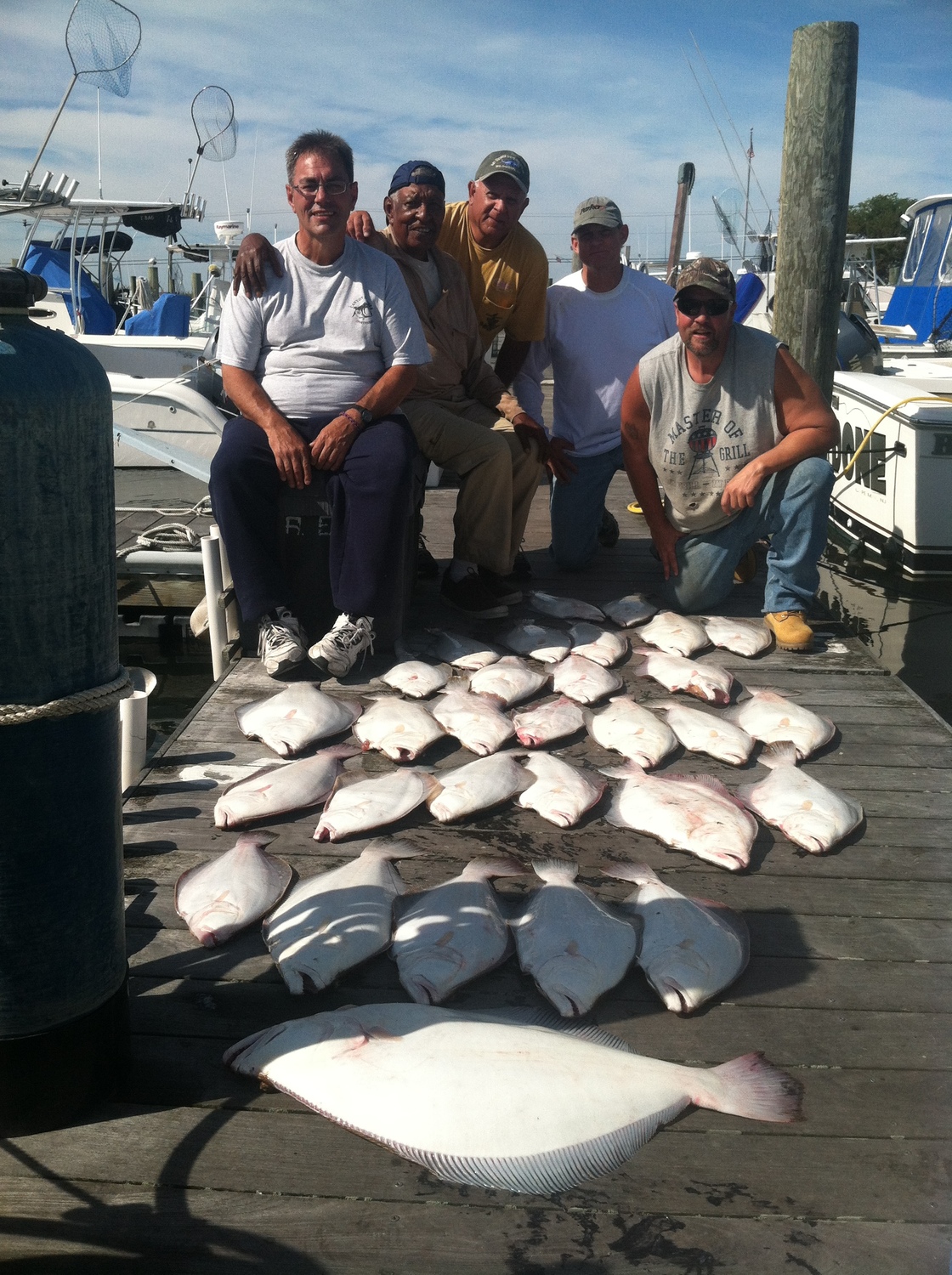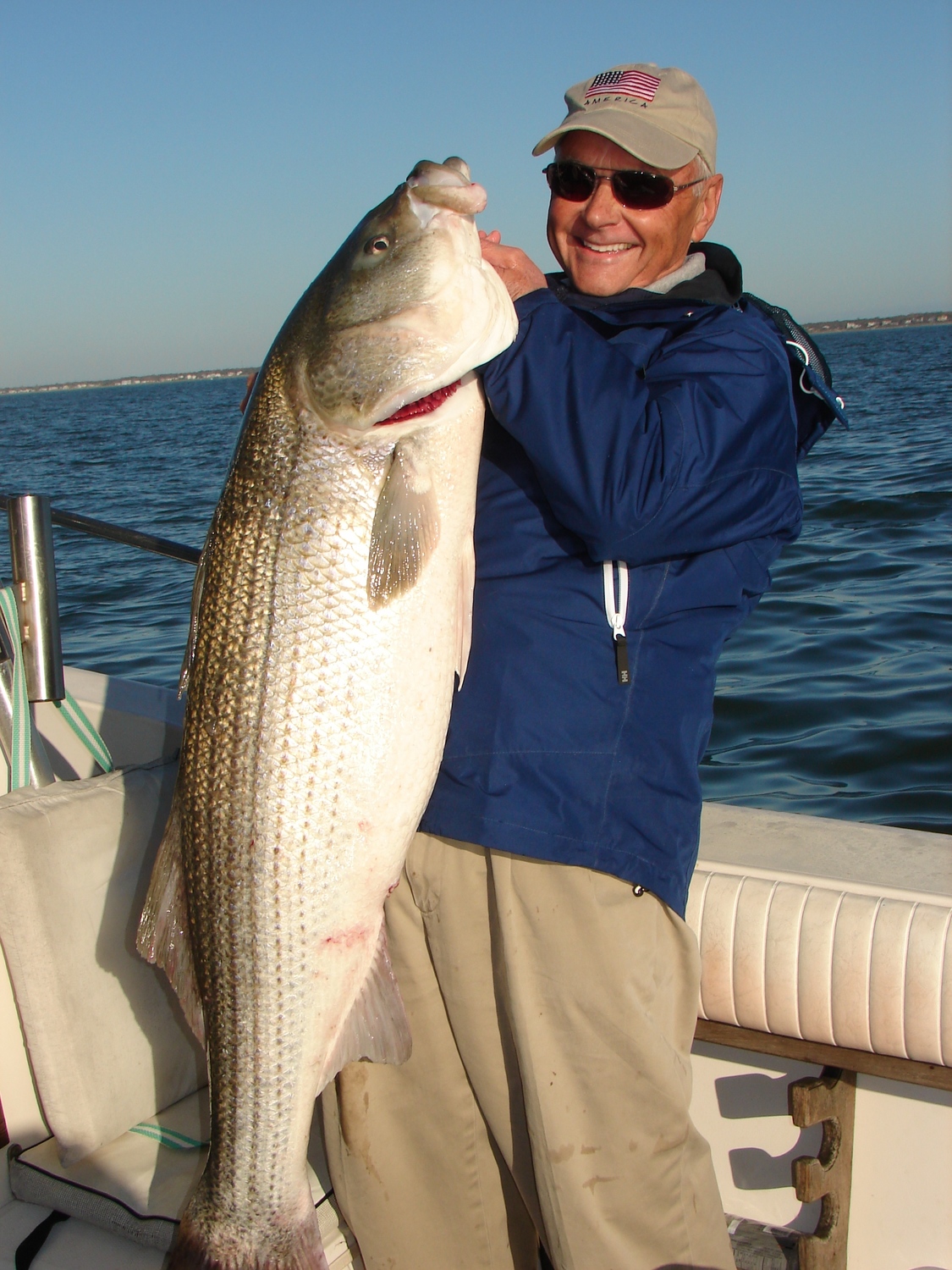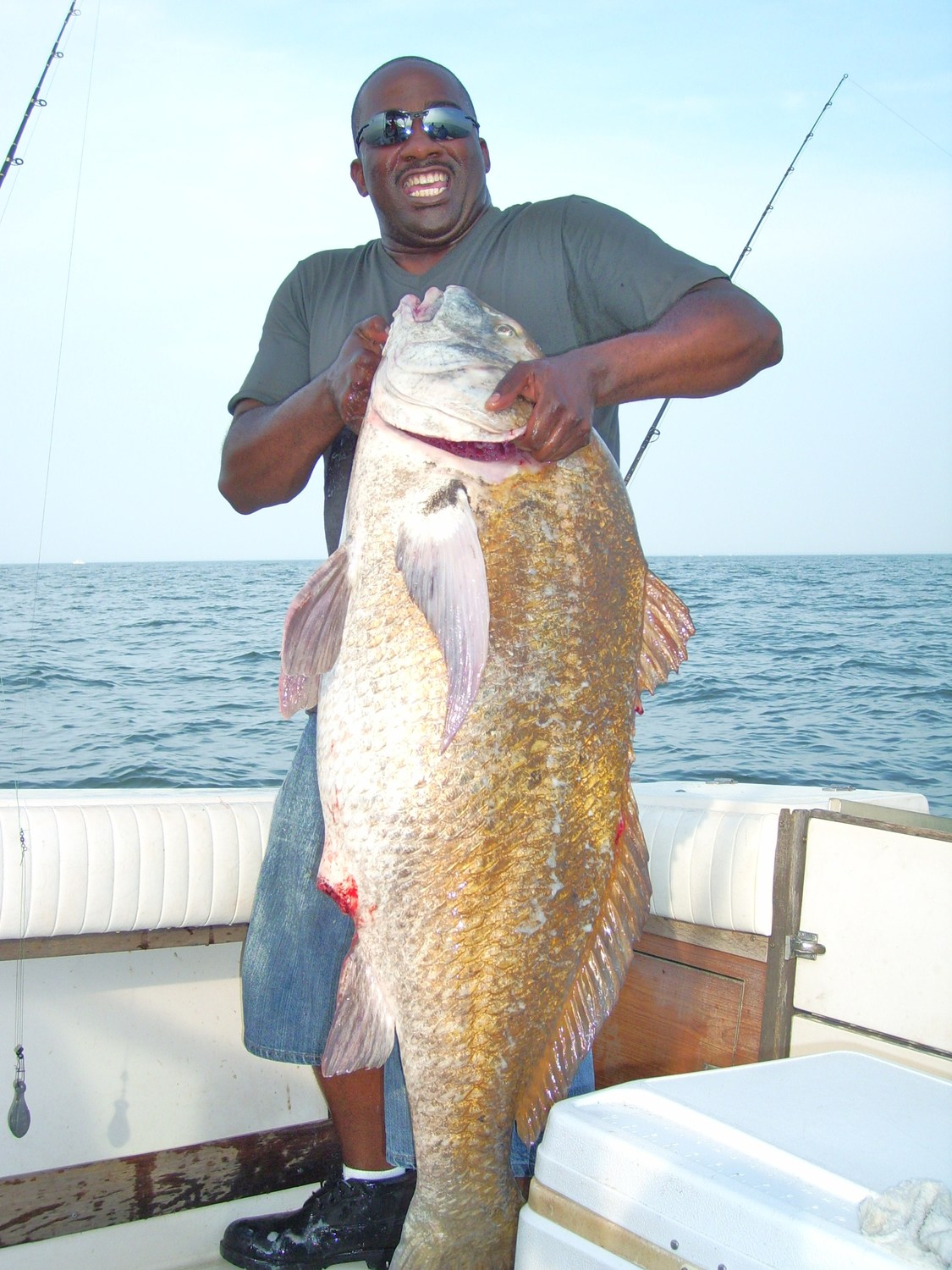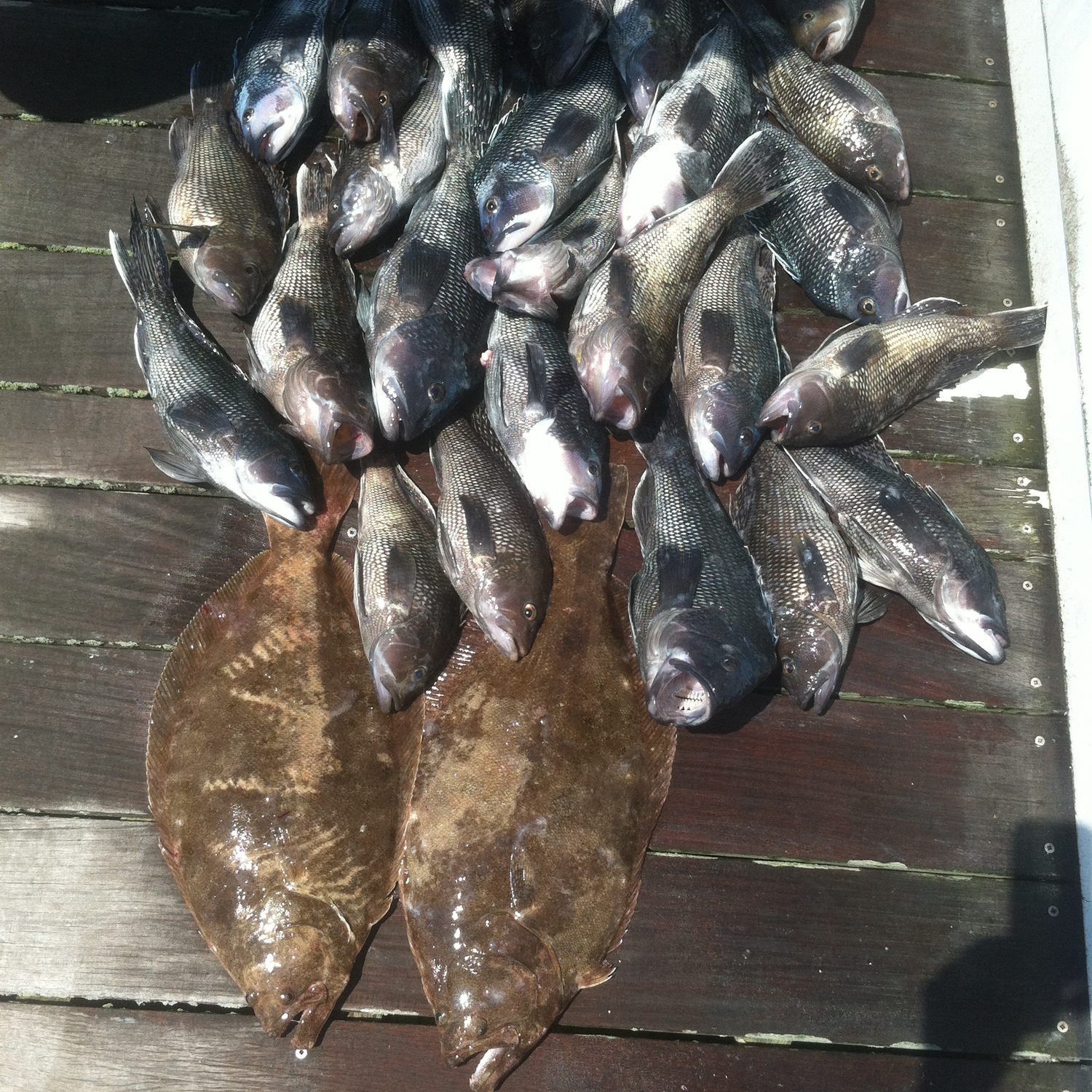Vetcraft Sportfishing llc
Excellent fishing adventures for experts, novices, and families
- 610-742-3891
- Vetcraft Sportfishing LLC, 970 Ocean Drive, Cape May, NJ, 08204 38.9543N 74.8839W, United States
- vetcraft@aol.com
VETCRAFT SPORTFISHIng LLC
Fishing Cape May, New Jersey for Summer Flounder (Fluke), Sea Bass, Stripers, Tog, Bluefish, Triggerfish, Black Drum, and other inshore species.
Capt Harv
As owner of Vet Craft Sport Fishing LLC, Captain Harvey Yenkinson is one of the most well known sport fishermen in the area. He has won numerous awards and sport fishing titles. Having been a boat captain and fisherman in Cape May for many years, he knows the "how, when and where" of fishing. He is a freelance writer of fishing articles for numerous fishing publications in the region such as the New Jersey Angler Magazine, The Fisherman Magazine, On The Water Magazine, and others.
Captain Harvey's knowledge of the marine biology of the fish he targets provides for an interesting day of learning about the fish species of the Atlantic coast. Not only will you enjoy a fun fishing adventure, you will also get to learn all of the interesting facts Capt Harv can teach you about the fish and the marine environment. Captain Harvey is very active in marine conservation and is a member of the Jersey Coast Anglers Association (JCAA), national chapter of the Recreational Fishing Alliance (RFA), chairman emeritus of the Pennsylvania chapter of the RFA. and currently an advisor to the MidAtlantic Fisheries Management Council.
Capt Harv has given numerous seminars for the Recreational Fishing Alliance, the New Jersey Angler Magazine, the BassBarn.com, and at the Atlantic City boat show. He has over 20 years experience fishing the Cape May waters.
Capt Harv believes in giving back to our marine environment and is a contributor and founding administrator of the facebook group, South Jersey Artificial Reef Association.
Capt Harv is also a veterinarian where at his hospital, Conchester Animal Hospital, in Boothwyn, Pa. He is married to his wife Sally and has two daughters Rachel and Abby.
THE VETCRAFT
The Vetcraft is a well built classic Grady White Sailfish powered by twin 200 HP Yamaha engines for a fast comfortable trip to the fishing grounds.
The The boat comfortably fishes 4-5 anglers with high gunnels for safety for young anglers. The boat has a head below and a bed for a snooze.
The boat is equipped with dual VHF radios, EPIRB, and a Garmin GPS/chartplotter, radar, and fishfinder. The boat carries 6 offshore life vests as well.
Fishing equipment consists of well maintained Shimano fishing gear.
Charter Rates
Capt Harv can offer you various charter packages. You can charter the whole boat for 3, 4, 6, or 8 hours. You can also come aboard an open boat trip where Capt Harv will group anglers together to make up a charter for the day. Rates include all fishing tackle, bait, and fish cleaning.
Prices below to charter the boat for up to 4 anglers. *Add $100 for up to 5 anglers.
8 hour trips for fluke, sea bass, tog, stripers, drum withun 10 miles.............................................................................$760
8 hour trips for fluke and sea bass 10-25 miles....................................................................................$800
8 hour inshore trolling trips.....................................................................................................................$960
8 hour trips for sharks guarantee to catch shark over 100 pounds or $200 discount....................$1100
6 hour trips for fluke, sea bass, tog, stripers, drum or bluefish..........................................................$660
4 hour trips for fluke, sea bass, tog, stripers, drum or bluefish...........................................................$560
3 hour evening cruises for back water sites, bird watching, dinner cruise.........................................$400
3 hour trips in the backwaters for those not wanting to go out in the ocean....................................$460
*$100 deposit to hold date. Deposits are nonrefundable unless trip cancelled 7 days prior to trip. Deposits will be returned if trip is cancelled by captain.
fishing reports
May 19....The striper and drum bite was a little off this week due to the full moon rampant tides in combo with colder and silted up water on the fishing grounds. More drum are being caught than stripers right now as those fish are exiting the bay.. The sea bass bite was terrific this week with some fluke to be thrown back (season opens May 24) as well.
May 26.....We caught some very nice drum this week up to 70 pounds. Hope to do some sea bass/fluke trips this coming week. Also some very nice weakfish are being caught as well.
June 3....Did sea bass fishing this week and had dinner for everybody with fish up to 16" Good reports of fluke showing up so will start fishing for the flukasauruses too!
June 16....The fluke really turned on big time this weekend. No flukasaurus size yet but nice fish 19-22 inches. Call now!
June 23....We had our best trip so far this year with almost a boat limit with fluke up to 24". Lots of short action too. Even caught a cutlassfish, first time ever catching one of those.
June 30.....A little slow on the far out sites but caught lots of fluke inshore this weekend. Also the bluefish, spanish mackerel, bonito, and mahi have shown up so I can run 4,6,or 8 hour trips for these fun to catch fish with lots of action to keep yJuly 7......Fluke fishing continues to be good on the reefs I like to fish. Some days the keeper ratio is better than others, but every trip we are catchihg lots of fluke. Some nice keeper sea bass mixed in too. Triggerfish have shown up so we should be catching
July 4..........Unbelievable fluke fishing this week. Had limit or near limit catches everyday with some real quality fish up to 5 pounds. Lots of action all day made for some fun trips
July 11.........More fantastic fluke fishing with fish over 6 pounds. Some more limit catches with lots of action. Good shark fishing too!
July 24.........Near full limit of fluke on the boat today!
photos
Testimonials
Captain Harvey Yenkinson is one of the best captains in all of south Jersey
I have fished with Capt. Harvey on many an occasion. He is very knowledgeable about the fish he is searching for and his insight will ensure that you have a good day on the water. Capt. Harv will do his best to put you on the fish.
I've fished with Capt Harv many times over the past 10 years. Not only a knowledgeable, quality teacher of the sport but a gentleman and provides a pleasurable experience. Inshore as well as Delaware bay fishing at its best. Most if not all the big fish I've caught were on his boat. Can't miss on the Vetcraft !!
The only fishing Captain in Cape May! You'll enjoy the trip, the knowledge, and the relaxing day of fun.
I have offshore Fluke, DB/Rips Striper and Drum fished with Capt Harv and he is a Captain extraordinaire!! He is 100% dialed in to the bigguns!! LOVE the go-fast Vetcraft....does over 35 kts.
Fishing Articles
FLUKE FISHING THE MICROENVIRONMENT
by Captain Harvey Yenkinson
The most productive fishing days for large fluke require bait presentations in the areas of the bottom of the ocean, bays, or backwaters that are the most densely populated with the bigger fish. Oceanic predators, like fluke, are dependent on using their hunting skills in areas most likely to provide ample size prey to support their body mass. Anglers fishing in such areas, using the appropriate baits and fishing techniques, are likely to bring home the large fluke they are targeting.
Benthic Structure
When seeking the appropriate spots to fish for large fluke, one needs to consider the construction of the surfaces over which our baits are presented. The ocean floor and the area immediately above it are referred to as the benthic and epibenthic environments. While not usually visible from the surface, global positioning equipment, video fish finders, and appropriate charts or charting equipment can enable us to find areas that will provide such benthic environments.
99% of the ocean floor is comprised of shifting sands that provide poor substrate to establish any bait holding or congregating habitat. Even within the 1% of the ocean floor that holds such habitat, tiny percentages of this habitat will hold the proper epibenthic bait species and benthic structure to attract the large fluke we target.
Marine communities that will hold large fluke congregations require some sort of hard fixed substrate to form a bait community. Natural systems that fall in this category include mollusk (clams, mussels) beds formed on the sloping edges of lumps or depressions. Also included in this category would be rocky bottoms found in ancient stream beds that are now part of our oceanic system.
Artificial reefs formed as part of the New Jersey artificial reef program or other ships sunk through disaster provide the same hard structure necessary to establish an appropriate marine community. Predators hunt where prey abundance is the most concentrated, and it is these habitats that provide the proper venue for big fluke to forage.
Fishing the Microenvironment
Fishing in the vicinity of natural or artificial reef structures is the common protocol of most fishermen and most days result in a decent catch. Our reef material is colonized by thousands of marine creatures including hard and soft corals, algae, mussels, barnacles, sea urchins, anemones, crabs, snails, and worms, just to name a few. This mass of interwoven and interdependent creatures forms the bait structure that form the basis of the habitat that will hold the prey species large fluke feed upon.
Making long drifts through such an area is successful when the bottom structure is dense enough to make the boat drift over productive areas in the course of its wind and current driven profile. The reality of long drifts though, is that only a portion of the time is spent in the most productive territory.
If a camera was attached to a fluke rig as it traversed the bottom, a wide variety of habitats would be seen. A natural or artificial reef is really a community of microreef systems, some of which are more favorable to fluke concentrations then others. The areas of most intense structure with greatest vertical relief and organism concentration will be the areas of greatest fluke concentrations. In particular, it will be the large fluke that have congregated in these structured areas. Large fluke will push their way into and congregate around areas of bait plethora to compete for the baits present. The scenario of a reef structure is that the large fluke will be concentrated in microenvironments of the best bait holding structure. In fact, the first large fluke arriving in the first schools of fish moving onto a reef system, will congregate tight to structure in the best bait ambushing real estate.
Savvy captains will try to keep anglers fishing in the areas of greatest fish concentration. This process is most successful due to the hunting tactics of the fluke themselves. Fluke, like all fish, hunt through acquired genetic feeding skills. The largest of fluke, though, have learned better skills through a process called operant conditioning. The largest fluke, through many years of hunting, have learned to repeat hunting techniques that are the most successful, and cease using ones which are the least successful.
The largest fluke, like an experienced urban combat soldier, have learned to hunt in areas that are the most likely to be productive. The ability of the captain to find these areas and keep his anglers fishing over such areas is the key to capturing large fluke. Fishing in these bait enriched microenvironments is a skill evolved through experience and logging these spots.
Finding the Hot Spots
Finding the most productive areas to fish is a combination of many factors. Knowledge of fluke migration patterns determines when and if the fluke will migrate into the reef areas. Our natural and artificial reefs will accumulate large fluke every year, but the timing and concentration of these fish will depend on many oceanic factors including bait movement, water temperatures, changes in water temperatures due to wind, and ocean currents. Once fish have migrated to our reefs, bait structure is ample to keep them there through the summer months into the early fall, until seasonal changes or hurricanes cause them to move offshore.
Once the fish have arrived, fishing in the appropriate areas becomes the duty to fill. If fishing on any of New Jersey’s artificial reefs, one needs to secure a copy of the reef charts to find where the structures have been sunk. The same should be done if fishing reef sites from any adjacent state. Fishing in uncharted areas such as fathom bank edges, lumps, or natural reefs requires self learned experience or gps locations from a friend.
Fishing Wrecks
Fishing in the most intensely populated areas is the key to finding the biggest fluke. Knowledge of different types of bait aggregating systems is key in this regards. One example is fishing by a wreck. Large fluke congregate at the edges of wrecks immediately adjacent to such structure. The further one ventures from the edges of wrecks, the more sparce the fish will be. Big fluke will lie within inches or a few feet of a wreck to wait in ambush of prey darting out from beneath or from the crevices of a wreck. Finding a wreck through use of gps numbers and then seeing it on your depth finder are the beginnings of fishing in such an area.
Due to the limitations of video depth equipment, you cannot tell if you are directly on top of the wreck or not, particularly if the water is deep and the wreck is small. Ideally, you want to stop your boat and begin your drift (or you could anchor) directly adjacent to the wreck. This can be done by bouncing your sinker off the wreck, till you no longer feel the “clink” and then dropping your rig directly adjacent to the wreck as the drift begins.
Even this technique can be refined by visualizing the habitat beneath. The prime fishing area can often be at the bow and stern of the vessel or structure, where eddies are created by the current whipping by the sunken vessel. All ambush predators have learned to hunt in areas of eddies, where bait fish are rendered move vulnerable to attack by swirling waters. Also areas of the wreck that are broken up, or contain low lying lattice type structure will be more productive then intact hull sections.
Another little know benefit of fishing adjacent to wrecks is a phenomenon that occurs from a persistent south or southwest wind. This wind moves inshore waters in the offshore direction and causes cool offshore waters to replace it inshore. This cooling effect of the inshore water, which can be up to 12 degrees, puts the fluke in a nonfeeding mode. The larger wrecks, however, will retain heat, and warm the waters adjacent to itself, similar to the way a hot water radiator heats a home. The localized warming effect of the wreck will keep bait and the fluke that feed upon them in the active mode even when the surrounding waters are cool and nonproductive.
Repeatedly making short drifts away from a wreck and into the wreck debris field is a very productive method. Succeeding drifts should start horizontally along the wreck to try to locate the most productive drift profiles of the wreck.
Fishing Rubble
Another microsystem within a reef structure that is present and is easier to fish is within a natural or artificial rock or rubble habitat. Here the vertical relief of such structure can form many bait rich areas in a fairly concentrated area. By short drifting (a hundred feet to a couple hundred yards) over such areas, one is likely to cross the path of many large fluke. By keeping an eye on your video screen for the hard bottom and its attendant marine growth outcroppings, one can short drift these highly productive areas.
Making repeated drifts over these areas, and repeating the most successful drift profiles, can lead to a quick fill of the cooler with large fluke. In reality, every drift will be somewhat different even if the same starting point is used. This occurs due to the exact start point of the drift, electronic error in gps readings, wind change, tide driven current change, rudder position when the boat is stopped, or deployment of a drift sock.
Fishing Drop Offs
When fishing on an edge in the back bays or on a mollusk bed on a fathom bank, fluke will often hold at a certain depth. Fluke congregate at a certain depth due to bait availability at that depth. Fish will often be found at the same depth in different locations in nearby areas. In this scenario, the microenvironment of the edge is the depth where fish are found. Much time is wasted by fishing a wide depth range when the fish have been found to be congregated at a certain depth. Slow trolling or drifting when possible in that depth profile will yield a much higher catch then slow drifting down a large incline, devoid of fish at other depths.
Big Fluke Success
By paying attention to the microenvironment you are fishing, and spending your drifting time in such areas, you will have the most successful days. Big fluke congregate in these areas of intense bait concentration and short drifting these locales will keep your baits in the attack field of these bottom ambushing predators.
Directions
Bree-Zee-Lee Yacht Basin
970 Ocean Drive
Cape May, NJ 08204-5400
From Rt 95, take Rt 322 East over the Commodore Barry Bridge, and continue on Rt 322.
Stay on Rt. 322 East...follow signs to Rt 55
Stay on Rt 55 for 29 miles (approx 25 minutes) until it dead ends onto Rt 47 South.
3 miles after getting on Rt 47, you need to veer left onto 347 South.
347 ends and puts you back on Rt 47 South (347 was a shortcut).
Turn left at a traffic light onto Rt 657 (sign points to Cape May Courthouse, Stone Harbor).
Travel 7 miles on 657, to third traffic light, and make a right onto the Garden State Parkway
Stay on the Garden State Parkway till it ends after 9 miles. Get in the left hand lane at the end of the Parkway.
Make left on Ocean Drive at the light. (Cold Springs Bait and Tackle is on the left)
Bree Zee Lee Marina will be on the right after 1/2 mile.
Immediately after enterring the marina, take the first road to the right.
Wind your way around till you see the large gray bathhouse, and park in that area.
Walk down the ramp directly across from the bath house, and make a left on the walkway. "Vetcraft" is on the right of the walkway (C dock, slip 48).
Contact
Call, Text, or email
- 610-742-3891
- Vetcraft Sportfishing LLC, 970 Ocean Drive, Cape May, NJ, 08204 38.9543N 74.8839W, United States
- vetcraft@aol.com



